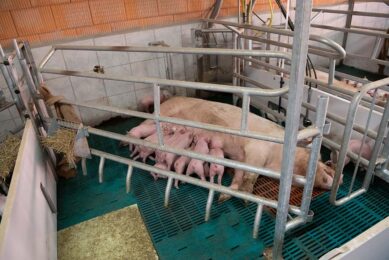RESEARCH: Influence of temperature on farrowing and lactating sows
Danish research on the influence of thermal environment on sow performance did not reveal any long-term effects. The sows were able to perform thermoregulatory behaviour and successfully adapt to room temperatures between 15 and 25°C.
The research, performed by scientists from Aarhus University, Denmark, aimed to investigate the effects of floor heating duration (35°C for 12 or 48 hours) after the birth of first piglet under different room temperatures (15, 20, 25°C) on sows during farrowing and lactation.
The study included 8 to 11 repetitions for each combination of room temperature and floor heating duration. There were no treatment effects on indicators of birth problems (duration of parturition, inter-birth intervals, umbilical cord lactate concentration), body weight changes of the sow and litter size/ weight until weaning.
Nest building
Sows at 15°C compared to 20°C and 25°C spent more time nest building. The feed intake was reduced the first seven days after farrowing in sows at 25°C; however, both daily feed intake and water consumption of these warm sows exceeded that at lower temperatures during the last part of the lactation.
Medical treatments
Sows at 15°C received more medical treatments until weaning at a floor heating duration of 48 hours only. Room temperature influenced prefarrowing water consumption, sow surface temperature, and respiration rate (25 > 20 > 15°C), and rectal temperature during the first 12 hours after the birth of the first piglet (15 < 25 °C); additionally long floor heating duration (48 hours) increased the respiration rate with 50% day 1 and 2 after the birth of the first piglet.
The proportion of lying time on the unheated slatted floor increased with room temperature, and transiently also for the 48 hour treatment 13 to 48 hours after the birth of the first piglet. The majority of piglets (82 to 95%) were born on the heated solid floor, regardless of room temperature. Sows spent approximately twice as much time standing/ walking at 15°C during 13 to 48 hours after the birth of the first piglet, at a floor heating duration of 12 hours only.
As indicated, long-term indicators of reduced sow performance were unaffected by room temperature probably because the farrowing and lactating sows in the current pen design were able to perform thermoregulatory behaviour and successfully adapt to room temperatures between 15 and 25°C.
Related websites:
Join 18,000+ subscribers
Subscribe to our newsletter to stay updated about all the need-to-know content in the pigsector, three times a week.











